
| Mottled Cup Moth (previously known as : Bombyx vulnerans) LIMACODIDAE, ZYGAENOIDEA | donherbisonevans@yahoo.com) and Stella Crossley |
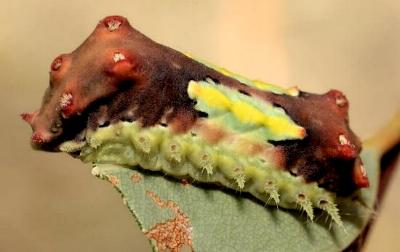
red form
(Photo: courtesy of
Trevor Jinks,
North Burnett, Queensland)

| Mottled Cup Moth (previously known as : Bombyx vulnerans) LIMACODIDAE, ZYGAENOIDEA | donherbisonevans@yahoo.com) and Stella Crossley |

red form
(Photo: courtesy of
Trevor Jinks,
North Burnett, Queensland)
These Caterpillars sting. The caterpillars of this species vary in colour from green through grey to red, but all have a pair of yellow and green saddle-like marks on the back which often have a white arc at each end, and a black outline.
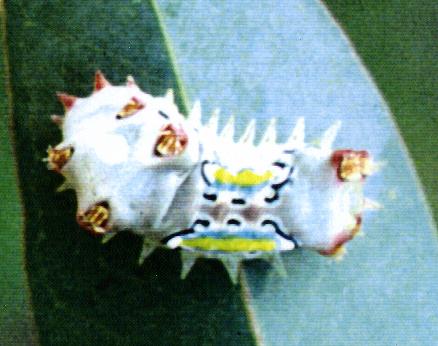
Along the sides of the caterpillar are pale green fleshy spikes, like a skirt. The caterpillars move like slugs because their legs are reduced.
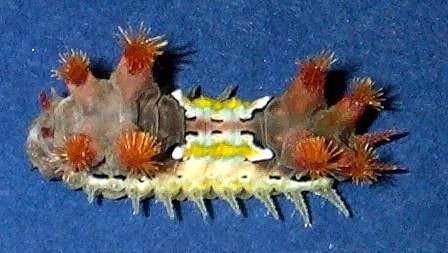
Initially the Caterpillars feed communally, eating only the surface layer of the leaves. Later instars separate, and take one leaf each, which they eat away completely.
The caterpillars normally feed on:
although they have also been found feeding on:
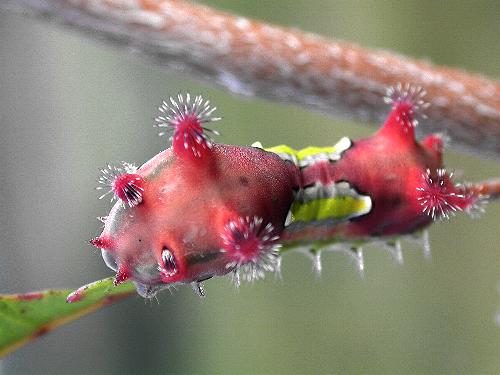
On the thorax and last two segments are raised knobs: four at each end. Coloured stinging hairs are protruded from these when the caterpillar is disturbed.
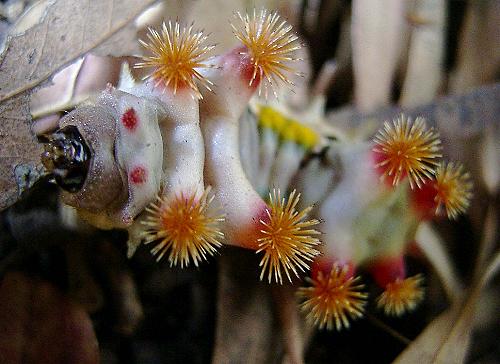
Anyone accidentally brushing against an overhanging branch of a Gum tree occupied by these caterpillars will know why they are called 'Spitfires'. The caterpillars do not actually spit at all. It is just the spines that sting.

The caterpillar grows to a length of about 2 cms. Oddly, it pupates in a much smaller cocoon, typically with a diameter of about 1 cm. The pupa is enclosed in a round brown cocoon, attached often to underside of a stem of the foodplant.

The cocooning and pupating process may be seen in a video taken by KIm Sinclair The caterpillar coats the cocoon with a special liquid which makes it hard and smooth.
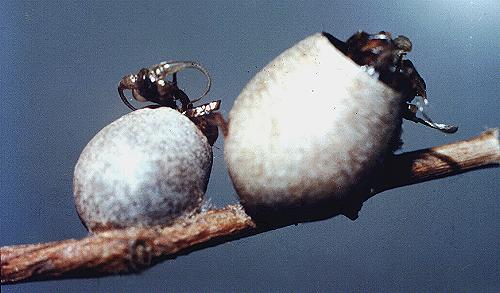
The cocoon has a ring of weakness around the top. Later, when the adult emerges, it does so by breaking the cocoon along this ring, pushing off a round cap, and leaving behind a little cup containing the empty chrysalis.

The adults have a dark brown abdomen and mottled brown wings. Each forewing has a pale grey terminal area and an indistinct pale discal spot. The hindwings are uniformly light brown. The moths have a wingspan of about 4 cms.
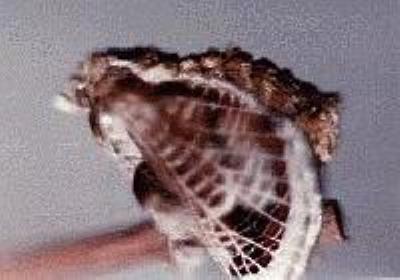
They characteristically sit on a twig with the body nearly
perpendicular to the twig.
Sometimes they sit with their wings folded
so that the tips overhang the twig.
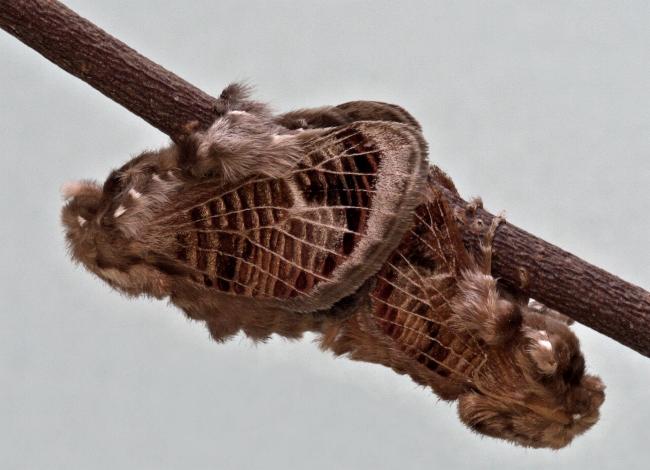
The undersides are plain grey, and rather hairy.
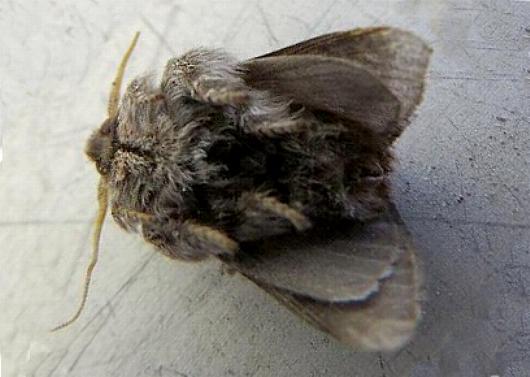
The species has been found in Australia in
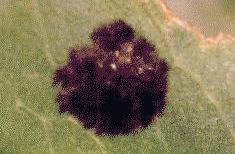
The eggsare laid in clusters of 40 or so on a leaf of the foodplant, and are covered by hair by the mother moth.
Further reading :
Densey Clyne,
The Best of Wildlife in the Suburbs,
Oxford University Press Australia, 1993, pp. 157-159.
Ian F.B. Common,
Moths of Australia,
Melbourne University Press, 1990, pl. 25.2, fig. 28.20, pp. 67, 69, 302.
Pat and Mike Coupar,
Flying Colours,
New South Wales University Press, Sydney 1992, p. 62.
Jak Guyomar,
Letter,
Butterflies and Other Invertebrates Club,
Metamorphosis Australia,
Issue 57 (June 2010), pp. 35-36.
John William Lewin,
Prodromus Entomology,
Natural History of Lepidopterous Insects of New South Wales,
London : T. Bensley (1805), p. 5, and also
Plate 4.
Buck Richardson,
Tropical Queensland Wildlife from Dusk to Dawn Science and Art,
LeapFrogOz, Kuranda, 2015, p. 104.
Paul Zborowski and Ted Edwards,
A Guide to Australian Moths,
CSIRO Publishing, 2007, p. 114.
 caterpillar |  butterflies |  Lepidoptera |  moths |  caterpillar |
(updated 15 January 2011, 13 August 2024)